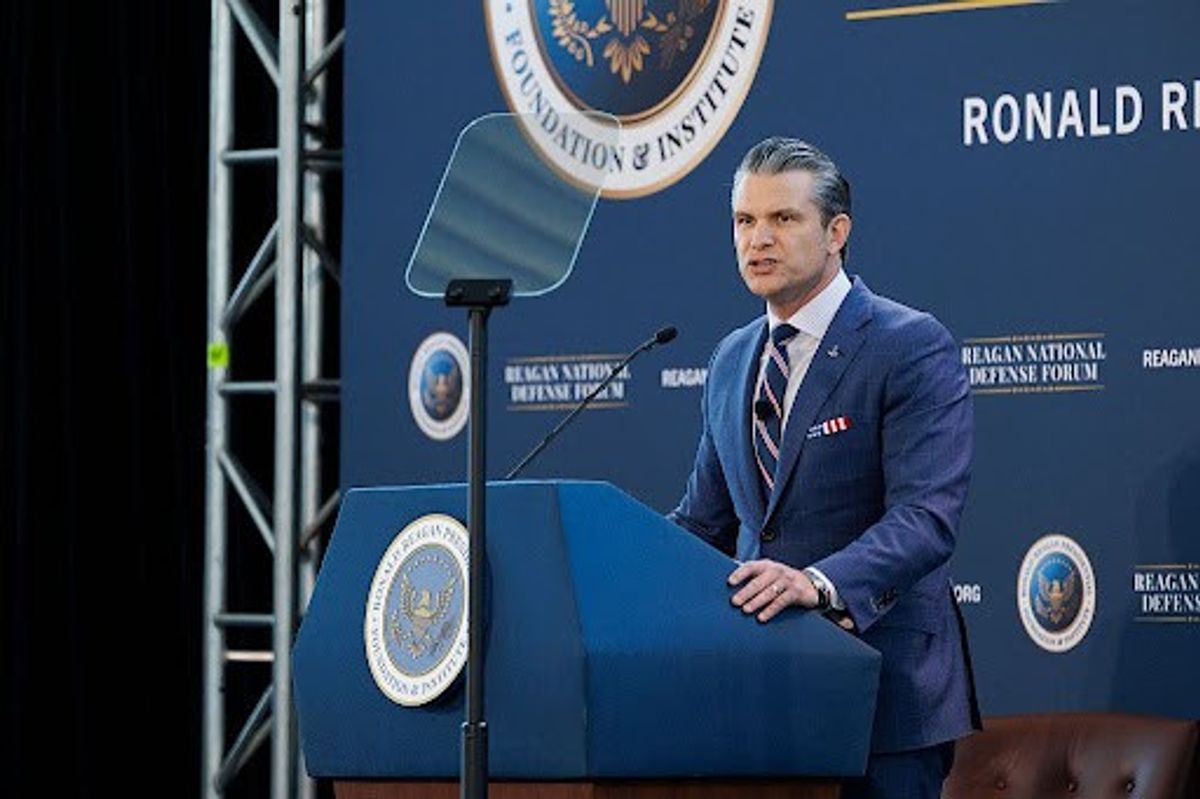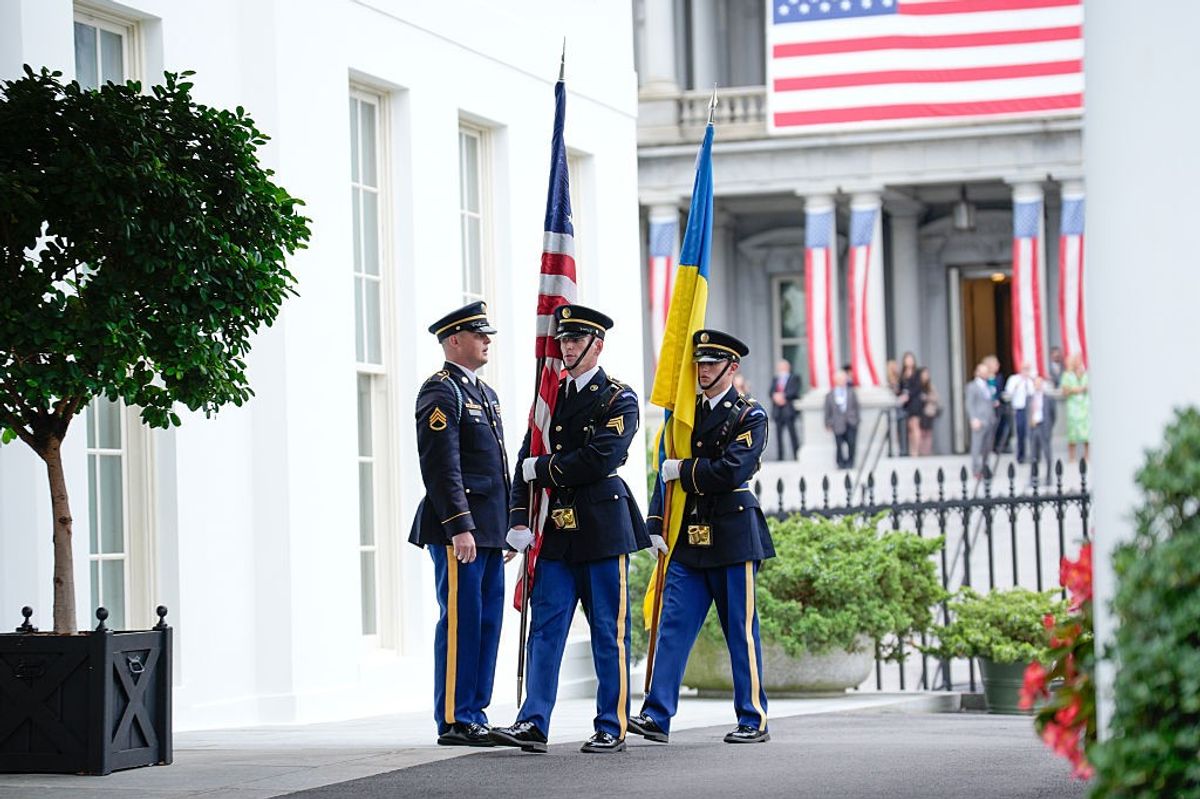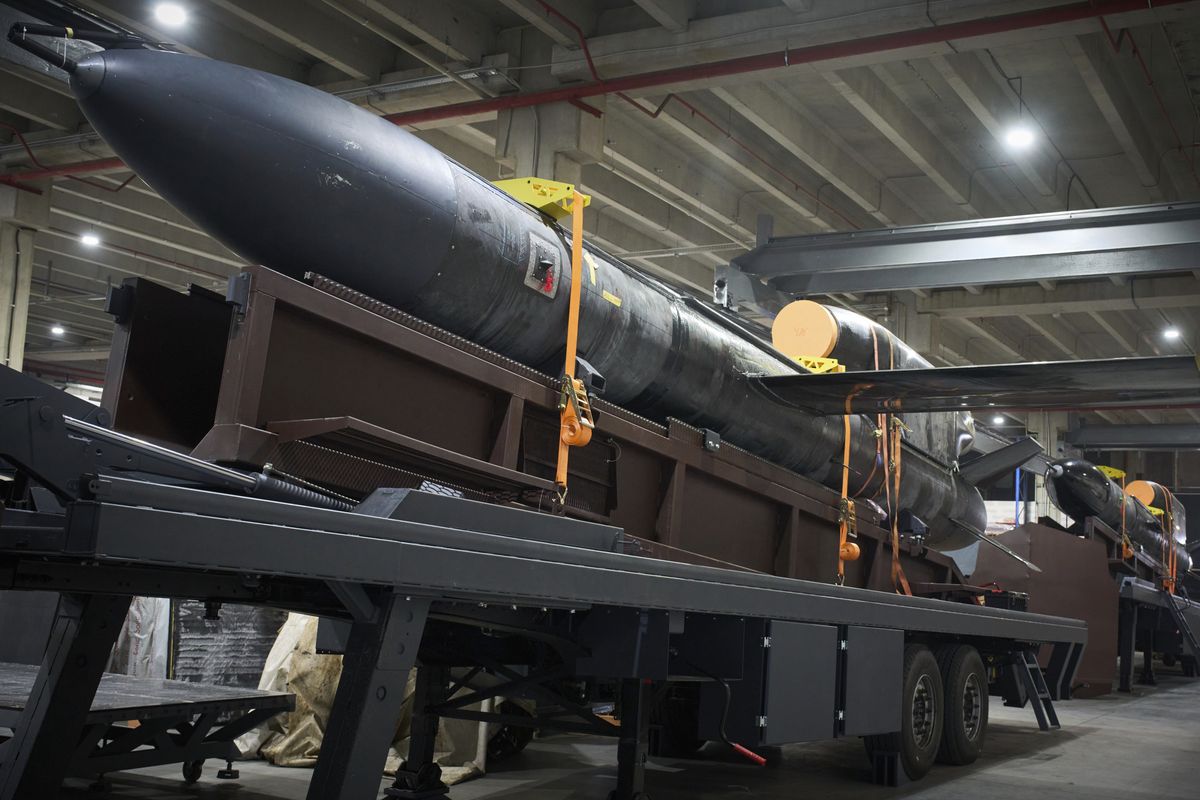OPINION — “We [the Army] have a challenge connecting with America's youth, or Generation Z. Most of today's young adults are unaware of what it means to serve. About 75% have little to no knowledge about the Army, and only 9% have the propensity to serve, the lowest it has been in over a decade. Market research shows that with Generation Z, the Army faces a knowledge gap, a relatability gap, a trust gap, and a culture gap.”
That was a bit of Under Secretary of the Army Gabriel O. Camarillo’s prepared statement for last Wednesday’s Senate Armed Services hearing on recruiting challenges facing the U.S. military.
The Army last year missed its recruiting goal of 60,000 new enlistees, only gaining 49,500 new soldiers, a record low, Camarillo said. The Air Force expects to miss its fiscal 2023 enlistment goal by more than 10 percent, and the Navy has lowered its education standards to help make this year’s goal. The Marine Corps met its 2022 goal, and the Space Force exceeded its.
Last Wednesday’s hearing raised a variety of military recruitment problems which I will discuss, along with the steps being taken to solve them.
But one of the recruitment issues that I think needs further exploration beyond this column was raised by Under Secretary of the Navy Erik K. Raven, who said, “We have a real challenge in explaining the value of military service to younger individuals and we [the Navy] are approaching this as a multi-year initiative to re-introduce Americans to public service whether that’s uniform service, civilian service, working in shipyards. We need to have a national conversation of all this.”
Another serious problem worth additional exploration was raised by Sen. Angus King (I-Maine) who said, “We have had testimony that 84 percent of the current professional military are from military bloodlines.” He introduced that statistic by saying, “I don’t know if it’s a problem,” but he later added, “That’s one of the downsides of the professional military – only one percent of Americans are involved directly in the military today.”
It is “in danger of becoming a family business,” he said. More than “60% of enlistees [have] a direct relative who served; we cannot afford to let that happen.”
I tested that out with Mike Hayden, retired-Air Force general and a former director of both the CIA and the National Security Agency (NSA) and his wife Jeanine, a long-time board member of the National Military Family Association. During our interview, they agreed that “we do have a military class,” and that long-term it could become a danger to our democratic society.
More about that in a future column.
Meanwhile, Army Under Secretary Camarillo told the Senators that as in past years, “The most significant barriers to our youth serving in the Army, regardless of gender or religion, are fear of death or injury, fear of suffering psychological harm, and fear of leaving friends and family,” according to the Defense Department’s Joint Advertising Market Research and Studies data. He added that qualification to serve continues to be low: “Currently, only 23% of young Americans are eligible to serve, as compared with 29% in 2013.”
This situation has existed for years, but at last the Army decided to do something about it. Last August, Army leaders created a pilot program called the Future Soldier Prep Course (FSPC), which is designed to help potential enlistees to overcome the academic or fitness barriers that barred motivated individuals from joining up. Under FSPC, the Army paid prospective recruits to participate in a new, 90-day training program on one of two tracks – academic or fitness – in hopes they could then meet entry standards and begin Regular Army basic training.
Although Camarillo did not say this, the FSPC is much like a cut-down version of the United States Military Academy Preparatory School, set up decades ago to provide academic, military, and physical training to qualify candidates for admission to West Point. Although it has had the reputation of helping potential athletes get into West Point, the Academy itself has claimed, “Since 1951, West Point Prep graduates have comprised 11% of the Corps of Cadets, yet they have held 25% of the senior leadership positions of the [Cadet] Corps.”
Apparently, last year’s pilot FSPC program proved successful.
Camarillo said, “As of February 18 of this year, 3094 trainees have enrolled in the academic component. Of those, 2408 graduated and moved on to Basic Combat Training (BCT)…956 trainees enrolled in the fitness component. Of those, 821 graduated and moved on to BCT…777 remain in training at Fort Jackson, S.C. across both components.
The Army plans to add four additional FSPC companies, two each at Fort Jackson, and Fort Benning, Ga., Camarillo said.
Another new program to aid recruiting, called “CSA Scholars” by Camarillo, “incentivizes high-performing Captains to seek out recruiting assignments by providing an opportunity to attend graduate school after successfully completing their recruiting tour. The first cohort of 21 Captains is already underway,” he said.
There also is a new pilot pay-incentive for recruiters this year, Camarillo said. Under the program, recruiters can earn $150 for each Category I-IIIA recruitment contract and $75 for each contract in the Category IIIB requirement. Individuals who score in the 50th percentile or higher in the Armed Forces Qualification Test aptitude test are considered Category I-IIIA candidates; those who score between the 31st and 49th percentile are Category IIIB.
Another incentive program is a pilot Soldier Referral Program, applicable to the active Army, Army Reserve and Army National Guard. Begun this year, it is directed at currently-serving junior enlisted soldiers. Promotion points are being offered Privates through Privates First Class who refer an individual who then enlists and enters basic training. The Army Times reported in late January that a soldier could be promoted to the next grade — up to specialist, or E4 — within 60 days of a referred applicant shipping to basic training, regardless of referrer’s time in service or time-in-grade requirements.
Camarillo said there are initial promising results with 4,900 referrals received as of March 14, resulting in 68 recruits actually entering the Army.
Perhaps less of an incentive is a new Army Recruiting Ribbon that will go to any soldier of any rank who refers an applicant when that new enlistee attends basic training. Individual soldiers can receive the ribbon up to four times during their career, and perhaps more important, each award of the ribbon will provide 10 promotion points to enlisted troops competing to make sergeant or staff sergeant.
Enlistee bonuses continue with recruits who agree to report for basic training within 30 days, earning up to $40,000. Enlisted jobs such as such Infantry, Intelligence Analysts, Military Police, and Cyber Operations, come with signing bonuses of up to $40,000.
Cipher Brief Subscriber+Members enjoy unlimited access to Cipher Brief content, including analysis with experts, private virtual briefings with experts, the M-F Open Source Report and the weekly Dead Drop – an insider look at the latest gossip in the national security space. It pays to be a Subscriber+Member. Upgrade your access today.
While Army recruitment is at record lows, the service’s retention rate of around 80 percent has exceeded target numbers in recent years. In fiscal 2021 and 2022, the Army retained more than 99 percent of its targeted, eligible soldiers. As Camarillo put it, “Once we get people through the door, they want to stay in the Army.”
One reason for that success has been a practice of interviewing potentially departing service members up to two years before their scheduled departures. This serves two purposes for soldiers and the Army: 1.) Greater predictability for soldiers approaching retirement, and 2.) allowing the Army to forecast losses earlier and give time to adjust its retention goals accordingly.
Following the Army’s apparent success with FSPC, Navy Under Secretary Raven announced at last week’s hearing that to increase his service’s enlistee pool, “Just this month, the Navy launched the Future Sailor Preparatory Course, which provides physical fitness training for high potential recruits who do not quite meet body-composition standards. Participants who meet standards within 90 days will transition to boot camp.”
On the academic side, the Navy last December announced it would accept up to 7,540 high school graduates in fiscal 2023 who scored in the 10th to 30th percentile on the mandatory Armed Forces Qualification Test, the lowest range from which the Pentagon allows services to enlist recruits. It was done, according to a spokesman for Navy Recruiting Command, to help meet its goal of enlisting 37,700 active-duty enlisted sailors in fiscal 2023, an increase of 4,300 from last year.
Acting Air Force Under Secretary Kristyn E. Jones told the Senators that this year “the Air Force will likely fall short of enlisted active duty recruiting goals by 10 to 13 percent – equivalent to over 3,000 Airmen –while the Reserve and Guard components are projected to miss their recruitment goals by even higher margins.”
The Air Force has a focus on local digital engagement through the web, social media,
and streaming platforms, and has netted more than 90 percent new user traffic for its recruiting websites, Jones said.
The service has also developed a “Women in Sports Campaign,” which aligns Air Force recruitment with female athletes, since approximately 7.6 million 18-to-24-year-old women watch women’s sports on YouTube. Using past and present Air Force female athletes, Jones said, “This program will ensure that these women are more aware of the opportunities afforded to them through military service.”
Jones said the Air Force has also established a centralized, national “e-Recruiter cell” to engage virtually with potential recruits who express interest online or from other marketing generated leads. While the so-called e-Recruiter program is only a month or two old, Jones said, “The ratio of those who enter the formal recruiting process after engaging with an e-Recruiter is about ten times higher than the normal rate for marketing-generated leads.”
To help solve the problem, the services are dealing with novel barriers, such as new tattoo regulations. The Air Force modernization of its tattoo policies could add 2,500 enlistees annually, according to its recruiters.
Previously, Air Force policies permitted ring tattoos, although they were limited to a single band on one hand. Now, in addition to the ring tattoo, a single tattoo is authorized on each hand not exceeding one inch in size. Additionally, one tattoo on the neck is authorized not exceeding one inch in measurement. Hand, arm, leg, neck, and ring tattoos can be exposed and visible while wearing any uniform combination. Chest and back tattoos will not be visible through any uniform combination or visible while wearing an open collar uniform.
Navy Under Secretary Raven at one point offered his own novel pitch. He was discussing the amazing opportunities offered to a young, potential Marine enlistee and said: “Think about this: An individual can come out of high school, join the Marines, become a certified cyber operator and do things they cannot do in the private sector – they can be a world-class hacker with a mission that the Marine Corps Cyber Corps carry out every day and that’s something you cannot find in the private sector.”
Of course, one could not do that type of hacking in the private sector because it would be illegal.
There are many other novel steps being taken to increase recruitment, not all offered up by the military.
During the hearing, Sen. Tammy Duckworth (D-Ill.) said she has introduced legislation that would “widen the enlistee pool” by adding immigrants such as the Deferred Action for Childhood Arrivals (DACA) program’s so-called “Dreamers” as eligible to join the U.S. military if they could pass a background investigation as well as meet the academic and physical standards.
It needs to be remembered that there was such a program – Military Accessions Vital to National Interest (MAVNI) – that begun in 2008 under George W. Bush administration. It was suspended in 2009, resumed in 2012, and closed again in 2016. MAVNI recruited legal permanent resident aliens, focusing on health-care professionals and those with special language and cultural backgrounds. More than 10,000 foreign-born recruits joined the military via MAVNI since its start, enlisting them mostly in the Army, according to a recent Stars and Stripes report. The three witnesses, Camarillo, Raven and Jones, all said they would work with Duckworth to get her bill or something like it passed.
More funds for defense easily can be done by Congress. Legislation for immigrants, legal or illegal, even to join the military, may be something else.
Read more expert-driven national security insights, perspective and analysis in The Cipher Brief












